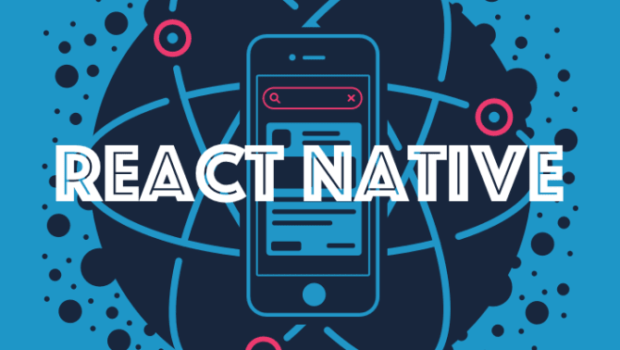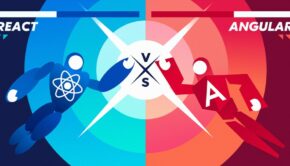How to Develop Compelling Apps Using React Native?
The world is not only calling for mobile apps, but also a faster time-to-market. If you release your app late, chances are your competition is already rocking the market with what was once your idea. When planning your mobile apps, you cannot compromise on the quality or the security your app offers. The interface needs to be sleek and user friendly, and your app should have secure pathways that seem reliable to the end user.
With a defined budget, and a even smaller timeline, you are obviously trying to identify ways to release your app in time. React Native is your go-to framework if you are planning a hybrid app, without compromising on the performance, experience or the quality of interface.
React Native is a JavaScript library that allows you to develop flawless UI for the native apps. You need to code once, and use it across the different platforms. This saves a lot of time and money, both of which are your constraints.
Let’s go through the benefits of using React Native, quickly.
Benefits of using React Native
- The platform has redefined how you reuse the same code and develop the application for cross platform. You can have a common code for both iOS and Android, embed it into the native code, and customize it to suit the individual platform. In short, you don’t need to write two different sets of code or, rely on the cross platform method of writing a common code. In React Native, the JS components are rendered as native widgets. In short, the apps developed using this framework work pretty similar to the native apps.
- You don’t need to spend a lot of time into learning the language. The fundamentals are pretty similar to JavaScript, and if you are good at Java, you can easily catch up with this language. The framework has reinvented the wheel and introduced a few new concepts that will catch your eye.
- React Native acknowledges the difference between the two native platforms i.e. iOS and Android. Thus, the “write once, run everywhere” has been changed to “learn once, write everywhere”. This framework embeds the JavaScript file into the application, and runs it locally. With the good community help available for the framework, you have ready to use components for the particular framework. You simply need to add the components and run the program, without changing the code.
Apart from this, you have an excellent developer environment and a strong community support available for the framework. All of this makes React Native an excellent platform for cross platform native application development. The framework intends to improve the code quality and increases the overall speed of development.
How to develop compelling apps?
You now know how React Native is an excellent platform for your needs. Let’s delve further and understand how you can develop compelling apps with this platform.
#1 Initiating the process
This is the first step towards building an impressive app using React Native. After your designs have been approved by the client and all the interface decisions have been frozen, you need to start with installing React Native. You can use the “Get Started” documentation available, which will help you install in a step-by-step manner.
At this stage itself, you need to make a decision whether you want to develop your project using Expo or not. Expo is the toolchain, which is present in the create react native app path, and it removes some of the barriers right at the start. While it is definitely a good way, you need to understand whether or not the libraries you are planning to implement are available in the expo path. If not, then choose to develop without expo.
#2 Understand the folder structure
Like with most frameworks, the folder structure can be slightly complicated with React Native. Right at the start of your development, understand the folder structure. This will help you build your project faster.
First you need to add a folder in the root of the framework known as “app”. Next, move the app.js file to this root folder app.
Once you are done with this step, you need to update index.js, import the statement to import App from the path ./app/app.js. once this is done, you need to start creating folders within the root folder.
Let’s study the remainder structure of the React Native root:
- Assets: There are two folders in this directory- images and animation
- Components: All the components will be placed in this folder
- Config: This is where the app’s colour scheme and other interface related things will be saved
- Screens: the main views will be known as screens and saved along this path
#3 Place your screens
This is the easiest step by far. You would have defined the number of screens by now, and you simply need to place them in the path defined by screens in the root folder. You will then need to stub these screens with the placeholder text.
#4 Define the navigation
You have defined the screens and set them up. Next, you need to work on creating the navigation as planned in the sketches. You will need to use the React Navigation library for this purpose. You can add router.js file to the root app folder, and install few other libraries.
There is a documentation available which will help install the icons and other elements required for navigation.
Add the necessary data points
There would be static data points that you would have defined for your application. You need to start with adding them at this point. The FlatList component will help add and display the data. With the many functionalities available with this component, you can scroll, load and even pull or refresh the data.
Now you have all the data points too. It is time to add the necessary functionality and build and groom your app as needed.
Summing up
This is just the getting started part, where you add all the static elements and start developing an app. Once, you add the dynamic elements through available components or customize it to your needs, you can easily develop a compelling apps.
So, if you are planning to release a hybrid app, opt for the React Native framework, as it will enhance the appeal, and accelerate development.
About Author:
Vishal Virani is a Founder and CEO of Coruscate Solutions, a mobile app development company. He enjoys writing about technology, mobile apps, custom web development and latest industry trends.
















